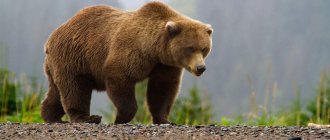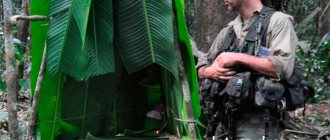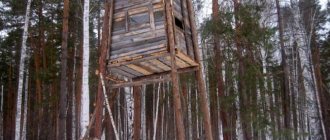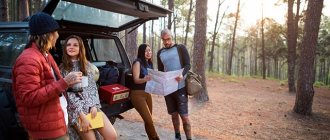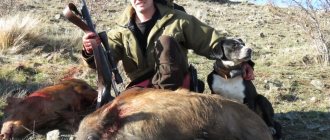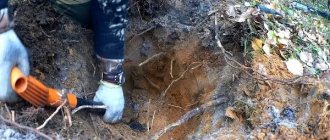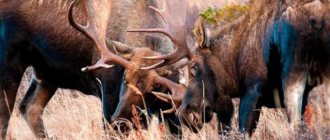In the summer, many people go to pick mushrooms or go fishing. Often, for trophy perch and pike perch, you have to make your way to the remote shores of lakes, and for a scattering of honey mushrooms - into the thicket of the forest. But here you can meet wild animals. How to behave in such cases was told to SZ by Nikolai Alexandrov, a tourist with 30 years of experience, one of the leaders of the Everest tourist club at the Khoroshevo Palace of Children and Youth Creativity.
Nikolai Alexandrov. Photo: Olga Chumachenko
Foxes come to the smell of food
Photo: Pixabay.com
In recent years, foxes have become increasingly common in forest parks in the Moscow region and Moscow. If bitten by these animals, you can become infected with rabies.
- If you see a fox, stay away from it. If it doesn’t go away, tap a metal object with a stick - a pot or a frying pan: such sounds scare away foxes.
These animals are also afraid of fire. You can scare away a fox by holding a burning stick in your hands. You should not leave food supplies near the tent at night, or fish bait near the shore: the smell can attract foxes.
Important to know: If the fox does bite you, you must immediately go to the nearest hospital.
What is important to know
Scientists were able to establish that the gas purification potential of green spaces depends on their type and age. For example, within the framework of calculations, it was possible to establish that the absorption of carbon dioxide by linden and pine trees is in the range of 5-16 tons per hectare per year, and the release of oxygen occurs in the range of 3-11.5 t/ha per year.
The State Inspectorate for the Protection of Flora and Fauna of the Republic of Belarus pays special attention to the protection of forest plantations. This authorized state body reports directly to the president of the country and exercises control over the use of plant and animal resources.
In forests and undergrowth, as well as in the herbaceous layer, about 0.7 tons per 1 ha of carbon dioxide are absorbed, and approximately 0.5 t/ha per year is released (in the light) due to photosynthesis. Dust in green areas leads to a significant reduction in this indicator by 40-50%.
The protection of flora and fauna involves planting shrubs and trees in transport zones in order to reduce the negative impact on the biosphere due to emissions from transport.
Rubber boots will save you from vipers
Photo: Pixabay.com
Poisonous vipers usually live in thick grass and swampy areas. They can be recognized by the zigzag stripes on their backs and their slit-like pupils. The viper attacks first if you come close to its home or accidentally step on it.
— The viper stings the ankle. When going into the forest, wear socks made of thick fabric, rubber boots or combat boots. The viper will not bite them. And don’t try to push it away from you with a stick! The viper’s reaction is faster than that of a human—it will have time to attack first,” says Aleksandrov.
Important to know Viper venom is not fatal, but causes a severe allergic reaction. Qualified assistance for a bite can only be provided in a hospital. While you get to the hospital, drink more water so that the poison comes out faster.
— Vipers are attracted to heat, so put out the fire at night. By the way, leaving a fire is also dangerous because of the risk of fire. Once, my friends’ tent almost caught fire from sparks,” says Aleksandrov.
Going to the forest
If you follow safety rules and are careful and observant, meeting forest dwellers can be quite safe. When going into the forest, you need to take the necessary standard kit: a folding knife, a charged phone, matches, a bottle of water, pepper spray. It is better to go into the forest in a group of two or three people. If you are going to stay in the forest overnight, then be sure to decide who will be on duty and make sure that the fire does not go out. As a rule, at night any wild animal will be afraid of fire and will not come close to the campsite. Along the perimeter of the tent city, you can mark the territory with your own urine or string a rope with something that jingles, for example, tie bottles or cans. To avoid attracting animals with odors, it is better to put leftover food in a tight bag. Let's look in more detail at which forest animals most residents of our country can encounter, and how to behave so that the animals do not show aggression.
A long stick will scare away the elk
Photo: Pixabay.com
An elk in the forest will not be the first to attack. The exception is when a person comes too close to its habitat. If a moose pins its ears back and lowers its head, this is a signal that it is ready to attack. With a blow from its hoof, it can cause fatal injury to a person.
— Take a long stick in your hands and hold it in a vertical position. It will scare off moose because these animals are wary of objects that are taller than them. By the way, be careful when traveling on country roads by car. The dimensions of the car and the dimensions of an adult moose are approximately the same. When moose go out onto the road, they often do not perceive cars as a source of danger and can be hit, warns Aleksandrov.
How to behave when meeting a wolf
Wolves most often attack single tourists in the forest, as well as women and children. Cases of wolf attacks on men are extremely rare. If you see a wolf from afar, it is best to move away unnoticed. You cannot look the wolf in the eyes and turn your back to it. If a wolf presses his ears back and crouches down, this is a sure sign that he is preparing to jump. In such a situation, it is best to climb a tree or throw any available food to the wolf to distract it. Do not be afraid that you will sit on the tree for a long time; as a rule, after a few hours the wolves leave the intended victim. People who meet wolves in the forest note that if the wolf is already very close, then you need to visually increase your size. Wolves do not attack those who are larger and stronger than them. This can be done, for example, by picking up a log and twisting it in different directions. It is important to roar like a wolf. If an attack cannot be avoided, then the best position remains the fetal position. It will allow you to cover your face and neck, which are typical wolf bite areas. However, you should not pretend to be dead, as in the case of a bear. The wolf is a very intellectually highly developed creature. If he senses that you are afraid of him, it will immediately make you defenseless. Pepper spray or a knife will also work to disarm an attacking wolf. If this is not at hand, then any sharp stick will do. The most sensitive thing about a wolf is its head and nose. If you fight off a wolf and it runs into the forest, it will probably attack you again. In this case, we advise you to light a fire or strong smoke (throw leaves into the fire). Wolves are very afraid of smoke. If you are bitten by a wolf, you need to go to the hospital as soon as possible to avoid contracting rabies.
If a wolf attacks a person, it will be effective to hide in a deep body of water. In such a situation, the wolf will have less chance of attacking, since it will not reach the bottom with its paws, and you have a chance to swim far away.
Only a tree can save you from a wild boar
Photo: Pixabay.com
Boars can become aggressive if they get too close to where their babies are. A boar ready to attack digs the ground with its hooves. There is no point in running away: this animal runs faster than a person. If the boar is aggressive, climb a tree and wait for it to leave.
Important to know: Do not shout or throw branches at the boar: this will anger him even more.
Methods of protection in animals
Almost all animals, with the exception of some large predators, are forced to constantly beware of enemies. Even the slightest inattention can lead to their death. In this regard, some animals have developed special defensive “weapons”, such as needles, claws and claws, which they can use in case of danger.
Others unite in groups, packs or herds, which allows them, in case of danger, to act like one large living organism, before which the enemy retreats. Some animals use “chemical” weapons for protection - they emit, for example, strong-smelling substances, warning their relatives of danger.
Group safety
Starlings, gathering in huge flocks and maneuvering in flight, make a terrifying impression. Many predators mistake the pack for a huge animal and do not dare to attack it.
Scorpion sting
There are more than 1,500 species of scorpions similar in structure. They each have eight legs and two large claws on the front of their elongated torsos. With these claws, the scorpion grabs the victim and tears it into pieces. The dangerous sting at the end of the scorpion's tail protects it from attacks by enemies.
Spiny ball
Almost everyone in Europe is familiar with such a forest inhabitant as the hedgehog. It can be found in gardens and parks. This friendly creature has excellent defense weapons. In case of danger, it curls up into a ball, hiding its tender abdomen and exposing its spines. And if the enemy does not retreat, he will learn a rather painful lesson.
Escape
Impalas (antelopes of the bovid family) graze in herds. With their sensitive ears, they constantly listen, watching to see if a predator is approaching them. In case of danger, all they can do is quickly run away, but before doing this, the first of them make a huge jump, clearly visible to the rest of the animals. In addition, they have a special gland at the back, which, in times of danger, releases a strong-smelling substance, which, like jumping, is a warning to the entire herd.
Owl
This young long-eared owl has already learned, in case of danger, to ruffle its feathers so as to look much larger and scarier than it really is. This is the only way she can scare off many of her enemies.
Schools of fish
The smallest fish prefer to cluster in dense schools or shoals, which move like one large living organism, and such a cluster confuses the attackers, who can no longer notice and grab an individual fish.
Let's sum it up
Research has found that the most effective way to protect birds and animals is an integrated approach. In particular, in agriculture, control over the use of chemicals is necessary. When used uncontrolled, in addition to the destruction of pests, the hunting fauna has a negative effect.
There are also problems that are associated with social, economic, and environmental nature. Monitoring shows that over the past decade, due to human economic activity, the number of species in flora and fauna that were initially not characteristic of a particular territory has increased significantly.
Among the methods that are considered effective for the protection of flora and fauna, the following can be noted:
- compliance with the rules for collecting plants, mushrooms, berries, hunting and fishing rules;
- tolerant attitude towards animals;
- the use of scientific standards for the removal of birds and animals, which helps to increase the “productivity” of populations;
- taking into account the capacity of the land, permissible production, limiting factors;
- quotas and licensing of the removal and use of flora and fauna;
- the use of modern biotechnology to normalize the lives of commercial animals.
Only with the implementation of effective and comprehensive measures is it possible to preserve and restore shelters, habitats of birds and animals, as well as re-acclimatize lost species. It is necessary to be careful about the use of chemicals when conducting human economic activities, and to use the principle of a “running away” circular spiral (from the center) when harvesting grain crops.
The task of the state is to create protected natural areas. Protected natural areas of various types (parks, reserves, arboretums, water protection zones) contribute to the restoration of species populations of birds and animals. Particular attention is paid to improving the environmental culture of schoolchildren, organizing electives for them, within the framework of which children learn a tolerant attitude towards the living world.
How to protect yourself in the forest from wild animals
We never know when we might be attacked by wild animals in the wild. Forest, swamp, jungle, ponds - this is their home, so we, as guests, need to behave with extreme caution. According to statistics, victims are children aged about 10 years and younger, they make up 60% of all victims, so children must be looked after with special attention.
How to behave when meeting a wild animal? In this article we will describe what to do when meeting some of the animals common in the Russian Federation.
Bear
1. If you are hunting or hiking, make as many sounds as possible. Laughter, songs, screams will force the animal to bypass the noisy company. If you suddenly see a bear in the bushes, scream and swear as loudly as you can. Moreover, if you have small children or women in your company, put them on your shoulders - large animals scare away bears. You can open the umbrella, raise your arms up, putting a jacket on them. Don't run around in the forest, it's better to stand close to each other.
2. The first step in 90% of cases is to make the bear run away. In general, they do not like people very much due to the large number of hunters, especially in hunting areas.
3. Don't panic if the bear stands on its hind legs or comes close. Usually bears determine in this way what kind of animal has come into the forest and whether it poses a danger. Do not touch it or crowd around it under any circumstances.
4. If the bear is acting aggressively, remain as calm as possible and retreat slowly back diagonally, remaining facing the animal. If the bear is following you, stop.
5. Do not look the bear in the eyes, this may be perceived as a threat. If a bear attacks you with its body, do not run or try to hide in a tree (this only works if the bear is very old and heavy; young bears will climb a tree faster than a person). It is known that bears, despite their weight, climb trees better than mountain climbers. In such an outcome, there is only one way out - to stand to the last. This, of course, is not easy to do, but you must try by all means to stay on your feet and not end up on the ground.
6. You can use any spray (mosquito repellent, perfume, deodorant, etc.), but pepper spray is better. If you get it in the eyes, the bear will run away or fall in pain.
7. If the bear nevertheless knocks you to the ground and does not leave, hit him with improvised means (stones, branches, knife, etc.), you can group yourself, i.e. curl up into a ball. If the bear leaves, remain in this position as long as possible. There are cases when bears, having knocked down their prey, drag it along with them, dig a hole, throw the prey there and cover it with leaves. In this case, it is better not to move, wait for the bear to leave.
8. If you encounter a mother bear with cubs, slowly move away from them in the opposite direction. This will let the mother know that her children are safe.
Snakes
1. Remember that most snakes in our forests are not poisonous and never attack first. However, before going into the forest you need to wear thick clothing, preferably rubber boots and, of course, always watch your step.
2. If you spot a snake, slowly move away. If she follows you, stop and stomp as hard as you can. The vibration of the earth should scare away the snake.
3. Do not try to grab the snake with your bare hands. Eighty percent of the time, snakes sting their prey at this point.
4. If you are bitten by a snake, you must immediately call an ambulance and wash the bite site with water and soap. Never try to suck or squeeze the venom out of a wound. This only works in Hollywood blockbusters. Be sure to remove all jewelry, watches, rings, bracelets, because... the affected area swells quickly.
5. Drink plenty of water. Do not apply ice or alcohol to the bite site, or consume it internally.
6. Remember what the snake looked like. The hospital will certainly ask you about this.
Wolf
Some people believe that wolves, like large dogs, can be tamed. But this is not at all true: the wolf is not afraid of humans and follows exclusively its natural predatory instincts.
1. You can climb a tree - wolves cannot do this. But at the same time it is necessary to observe whether the wolf has gone far enough.
2. When setting up camp, keep the fire going all night, and do not scatter food waste, which can attract not only one wolf, but an entire pack.
3. Don't try to run away from the wolf, it's useless. You should also not show your teeth or look into your eyes.
4. As in the case of the bear, everyone needs to lift something above their heads and stay close to each other.
5. When attacking, use any hard objects: an ax, a knife, stones, etc. If you are unarmed, give the wolf your elbow, and with your other hand try to either gouge out the eyes (for example, with a key or screwdriver) or hit the wolf hard on the nose. These are the two most painful areas on the animal’s body.
So, we have listed the main animals that pose a danger. When going outdoors outside the city, don’t be lazy to ask residents of nearby settlements about dangerous animals. Surely they had to deal with them more than once. You can also protect yourself with thermal imagers that will show hidden animals both day and night.
